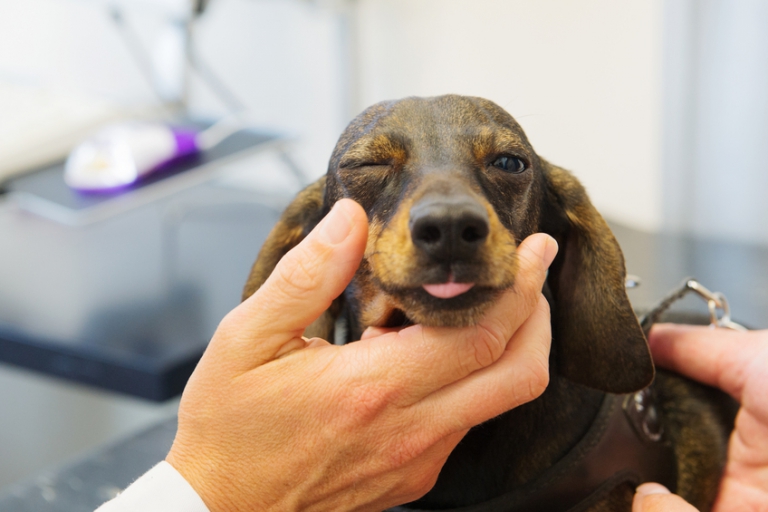Ophthalmology


In dogs, bacterial conjunctivitis is usually secondary to other underlying dysfunction e.g. poor eyelid anatomy, tear-film abnormalities etc. The most commonly isolated bacteria are Staphylococcus pseudintermedius; other organisms include Streptococci.
In cats, Chlamydophila felis is the organism isolated most often. Staphylococcus spp., Pastuerella multocida and Mycoplasma spp. are also isolated. Viral infection (herpesvirus, calicivirus) is an important cause.
In dogs, the causes of conjunctivitis include:
In cats, there are several viruses that can cause conjunctivitis, one of the most common being the herpes virus. Cats that are regularly exposed to other cats with viral infections are more prone to develop the disease. In addition, allergies can cause the eyes to react as an external response to the allergen, or it may be as simple as a foreign particle lodging in the eye. Finally, pure bred cats are more likely to develop the disease than other cats.
In cats, Chlamydophila felis is the organism isolated most often. Staphylococcus spp., Pastuerella multocida and Mycoplasma spp. are also isolated. Viral infection (herpesvirus, calicivirus) is an important cause.
Symptoms
The clinical signs of bacterial conjunctivitis are:- Red conjunctiva
- Conjunctival chemosis (swelling)
- Ocular discharge
- Ocular discomfort
Causes
In dogs, the causes of conjunctivitis include:
- Allergies to various environmental allergens
- Trauma to the eye, from conditions such as entropion, where the eye lashes roll in and touch the eye
- A condition called dry eye
- The bacteria that are normally found in the eye can proliferate and cause secondary infection.
In cats, there are several viruses that can cause conjunctivitis, one of the most common being the herpes virus. Cats that are regularly exposed to other cats with viral infections are more prone to develop the disease. In addition, allergies can cause the eyes to react as an external response to the allergen, or it may be as simple as a foreign particle lodging in the eye. Finally, pure bred cats are more likely to develop the disease than other cats.



